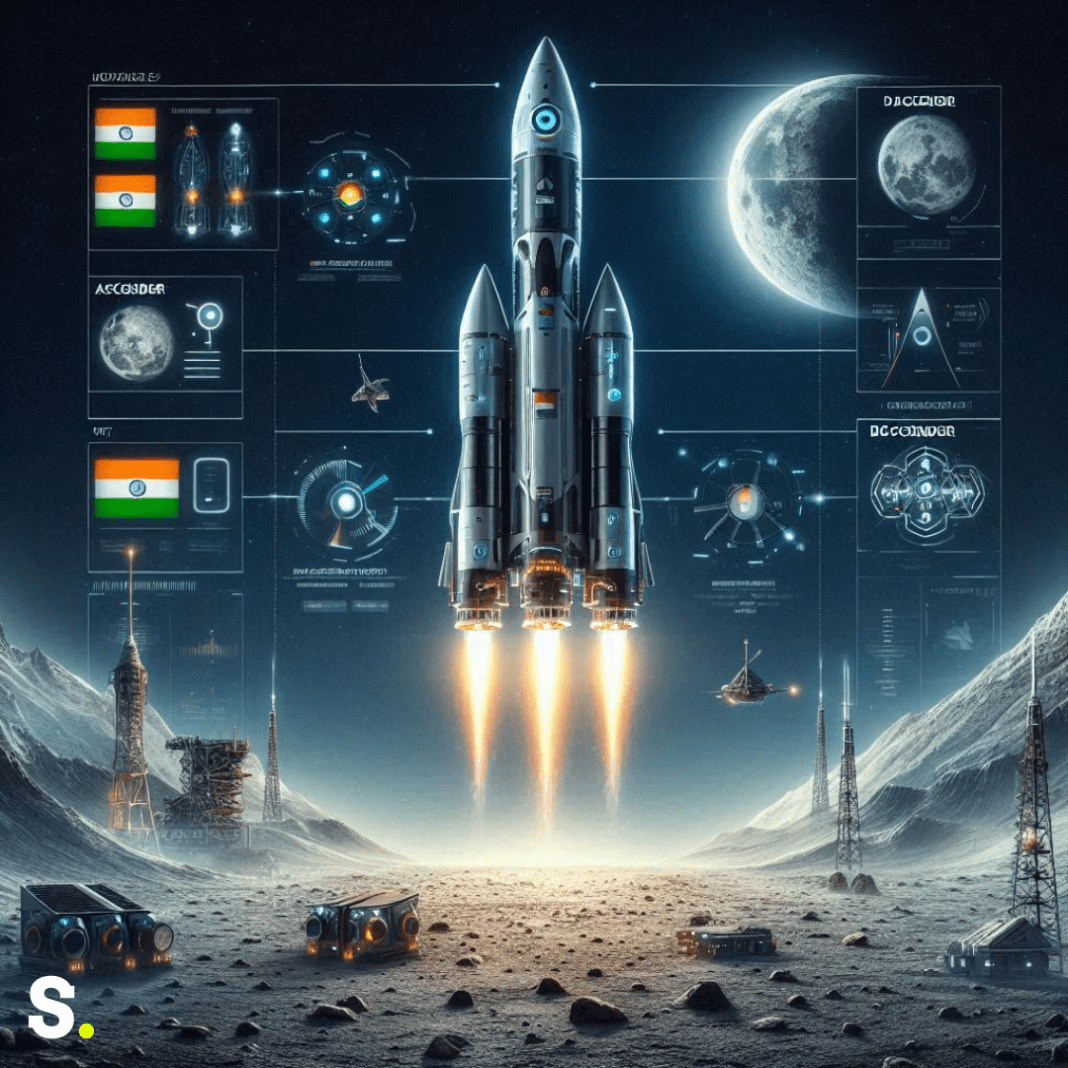India’s space exploration program has recently achieved a significant milestone with the approval of its fourth lunar mission, Chandrayaan 4. This new mission, which aims to bring lunar samples back to Earth, represents a crucial advancement in the country’s space capabilities. Here’s an in-depth look at what this mission entails and what it means for the future of space exploration in India.
Chandrayaan 4: Pioneering Lunar Exploration
The Chandrayaan 4 mission is set to be a groundbreaking lunar sample return mission. Gathering samples from the moon’s surface and returning them to Earth for examination is its main goal. This mission will utilize two rockets to accomplish its goals.
The first rocket, similar to the CSLV MkIII, will carry two important modules: the ascender and the descender. The descender module is equipped with a robotic arm designed specifically for collecting lunar samples. The purpose of this arm is to carefully collect pebbles and dirt from the moon’s surface. Once collected, these samples will be transferred to the ascender module.
The ascender module, which will return the samples to Earth, will thereafter be recovered by launching the second rocket at a later time. The mission’s launch is planned for 2027, and it aims to achieve several technological milestones. These include demonstrating the ability to return lunar samples to Earth, which has not been done by any Indian mission before.
This mission follows the success of Chandrayaan 3, which achieved a historic lunar landing and demonstrated key technologies. The successful landing and operation of Chandrayaan 3 showcased India’s growing expertise in space technology, setting the stage for the more ambitious objectives of Chandrayaan 4.
Advancing Space Technology and Future Goals
The Chandrayaan 4 mission is a significant step forward in advancing space technology. One of its main goals is to demonstrate the complex technology needed to not only land on the moon but also to return to Earth. This includes the capability to fire a rocket after landing and wait for 14 days—a technical challenge that requires precise engineering and advanced technology. Successfully overcoming these challenges will be a major achievement for India’s space program.
In addition to Chandrayaan 4, the Indian Space Research Organisation (ISRO) is working on several other key projects. Launched by 2028, the Bharatiya Antariksh Station (BAS-1) is one of the biggest planned projects. This space station will be a significant milestone for India, marking its entry into the realm of space stations and expanding its role in international space exploration.
The Chandrayaan 4 mission also highlights India’s broader objectives in space exploration. One of these objectives is to develop and refine the technologies needed for future manned missions. While Chandrayaan 4 focuses on robotic exploration and sample return, it also serves as a crucial step towards the more ambitious goal of sending Indian astronauts, or “cosmonauts,” to the moon.
Building Confidence for Future Missions
India’s space exploration efforts are not limited to lunar missions. The country is also working on expanding its capabilities in various areas, including the development of technologies for manned space missions. The successful execution of the Chandrayaan 4 mission will contribute to building confidence in these technologies, which are essential for future projects.
One of the key projects in this regard is the Gaganyaan mission, which aims to send Indian astronauts into space. The expansion of the Gaganyaan mission’s scope reflects the broader vision of India’s space program. The experience gained from Chandrayaan 4 will play a vital role in preparing for such ambitious missions.
The Chandrayaan 4 mission marks a significant advancement in India’s space exploration efforts. It represents a crucial step towards achieving the country’s broader space objectives, including the development of technologies necessary for future lunar missions and manned space exploration. The mission’s focus on lunar sample return and technological demonstration will contribute to India’s growing expertise and capabilities in space technology.




